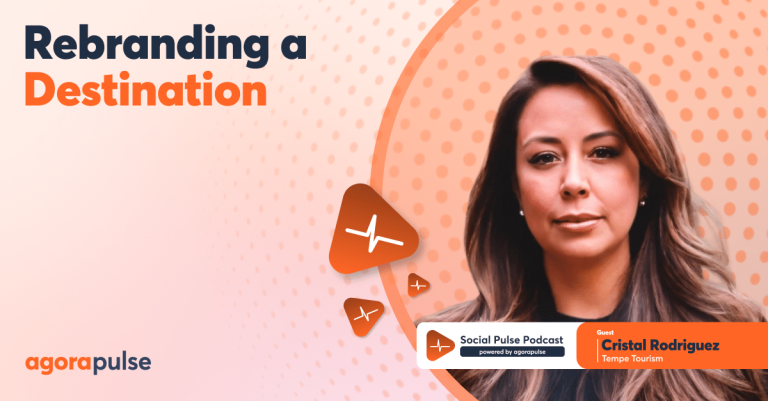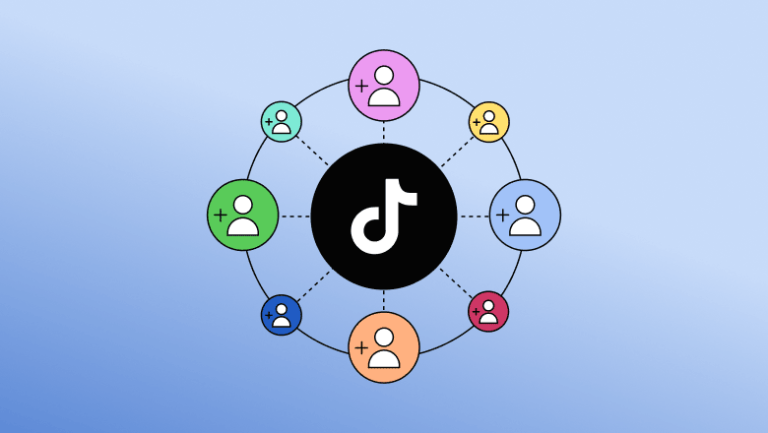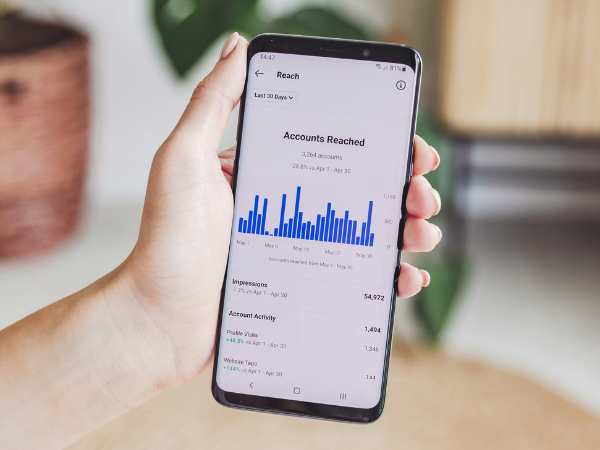
Extra doesn’t essentially imply higher. Suppose emails in your inbox, glitter on a Mom’s Day card, scorching sauce… That applies to social media metrics, too.
You could be stunned to listen to it.
The extra data you’ve, the higher you possibly can tailor your social media technique, proper? Nicely, not precisely. Not all social media metrics are created equal, and which of them to give attention to comes all the way down to your particular social media objectives.
You could be testing a brand new format, monitoring viewers progress, or attempting to know how folks work together along with your posts. And whereas it’s tempting to trace every part, extra knowledge doesn’t at all times imply extra readability.
Metrics are most useful after they information your subsequent transfer — whether or not that’s adjusting your content material, switching up your posting schedule, and even pondering up new merchandise.
On this information, I’ll stroll you thru 12 social media metrics which might be particularly value a take a look at in 2025, after they’re most useful, and the way you should utilize what you study to help your social media advertising and marketing objectives.
Social media metrics are the numbers you take a look at to see how your content material is performing towards your social media objectives.
Any time you examine how many individuals preferred a publish, clicked a hyperlink, or adopted your account, you’re working with social media metrics. Every one tells its personal story about your content material’s attain and affect.
You might hear folks seek advice from them as “social media KPIs” or key efficiency indicators. They sound related, however they aren’t precisely the identical.
Metrics embody each single factor you possibly can measure in your social media channels.
KPIs are the precise metrics you’ve chosen to trace in direction of your objectives.
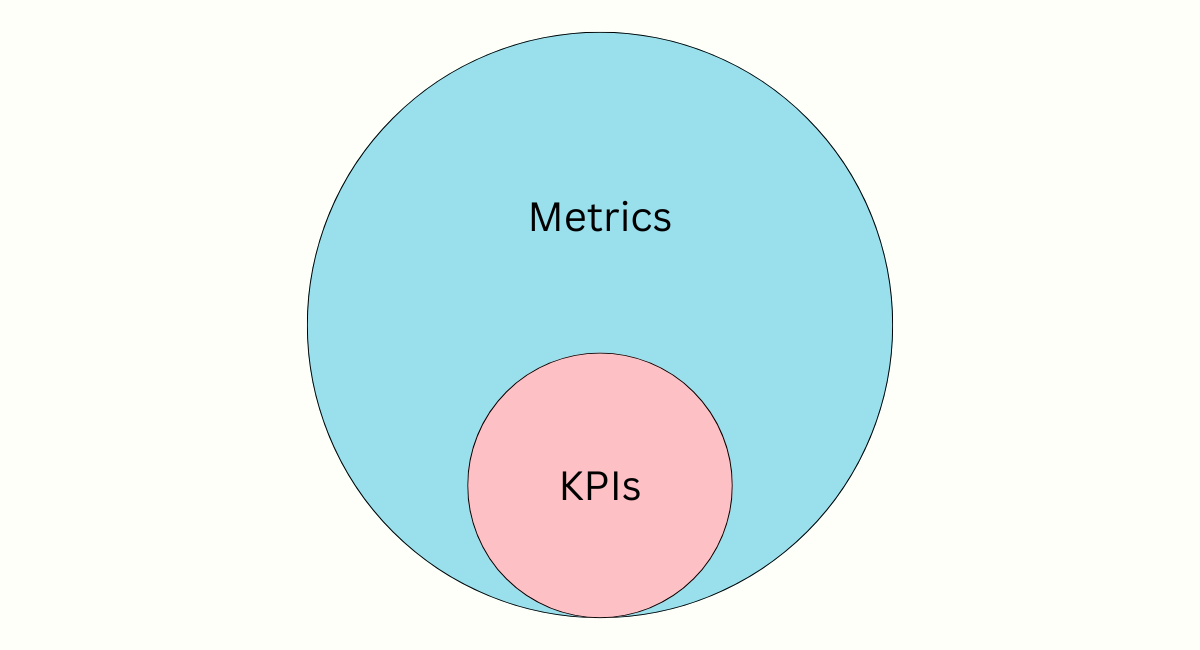
Let’s take a look at the important thing metrics that deserve your consideration.
Some metrics show you how to get a greater sense of how individuals are responding to your content material. If you observe these particular alerts, you begin to see clear patterns in what your viewers enjoys and comes again for.
1. Engagement price
Engagement price tells you the way a lot your viewers is interacting along with your content material — not simply seeing it, however actively responding to it.
Issues like likes, feedback, shares, or saves all rely in direction of engagement price. It’s a fast solution to perceive whether or not your content material is catching folks’s consideration and prompting them to reply.
Engagement price is expressed as a share you possibly can calculate with this components:
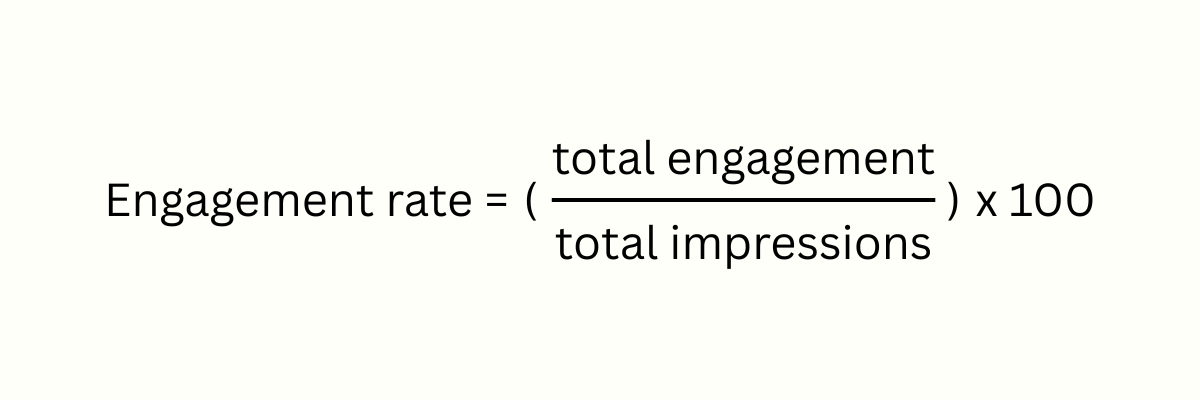
Freelance social media marketer Rebecca Broad makes use of this metric as a intestine examine whereas creating content material. “Retaining engagement price in thoughts means I continuously assess visuals and replica and ask ‘why would anybody care?’” says Rebecca.
“Why would somebody who sees this publish cease scrolling, and spend valuable time and power participating with it?” It’s a perspective that may show you how to maintain your viewers on the heart of each inventive choice.
You possibly can observe engagement price:
- for a single publish
- throughout a marketing campaign
- over time on a platform
Every view offers you barely totally different insights — from how properly a selected piece of content material landed to how your viewers is participating week over week.
Put up engagement price
Put up engagement price exhibits you which ones posts are making folks cease and react — not simply scroll by.
Such a social media engagement additionally tells the algorithm your content material is value sharing extra extensively, although they’re typically weighted barely in a different way on every platform. For instance, shares (particularly in DMs) are a robust sign to the Instagram algorithm. Significant feedback carry weight on LinkedIn, particularly after they get a dialog going.
Observe this metric when:
- you are experimenting with new content material codecs
- you are selling a message you need to stand out
- you need to maintain a normal eye on what your viewers responds to
Methods to use publish engagement metrics
If you see a spike in engagement, don’t cease on the quantity — work out what’s behind it. Was the publish tied to a trending subject? Did you ask a query that obtained folks speaking? Did the visible pop within the feed?
These are the sorts of clues that may information what you publish subsequent. And if one thing actually clicks, search for methods to repurpose it elsewhere — Rebecca typically reworks robust LinkedIn posts into weblog CTAs (calls to motion).
On the flip aspect, if engagement is low, that’s your cue to experiment. Change up the format, attempt a special tone, or shift your focus and see what sticks.
Marketing campaign engagement price
If you need to know the way a whole social media marketing campaign is touchdown — messaging, publish timing, and creatives — marketing campaign engagement price offers you the complete image.
As a result of campaigns typically span a number of codecs and run over a number of days, this metric can reveal patterns you could not spot whereas particular person social media posts alone.
Observe this metric when:
- you are launching a brand new services or products
- you are working a seasonal promotion (Black Friday + Cyber Monday, anybody?)
- you are elevating consciousness on a subject
Methods to use marketing campaign engagement metrics
For manufacturers, marketing campaign engagement price is a useful solution to regulate your strategy mid-campaign. If engagement’s low, you would possibly rethink your subsequent publish or shift your advert spend. It’s additionally a sensible solution to check influencer or creator partnerships earlier than making greater commitments in future campaigns.
Creators can embody robust marketing campaign engagement charges in pitches and media kits. A strong marketing campaign engagement price exhibits manufacturers that you simply gained’t simply get them in entrance of individuals — you’ll get folks speaking, following, and possibly even shopping for. For a model in search of its subsequent companion, that type of consequence stands out.
Platform engagement price
Platform engagement price offers you a broader view of how your content material is performing throughout a whole social media platform. If you observe this over time, you’ll begin to see whether or not your viewers continues to be responding or if engagement is starting to dip.
Observe this metric when:
- you’re evaluating whether or not your general social technique is working or wants a shift
- you need to know if the platform continues to be value your time, or in case your focus could be higher positioned elsewhere
Methods to use platform engagement metrics
If engagement is regular or trending up, it’s an indication that the platform is value continued effort and time.
If it begins to fall, it may imply your content material wants a refresh, your posting rhythm wants tweaking, or your viewers is transferring elsewhere — and it could be value following them.
2. Common video watch time
Common watch time (typically referred to as common view length) is the variety of seconds folks spend watching your video.
It’s one of many clearest video efficiency metrics — a better common watch time means viewers are sticking round for longer. It issues much more on platforms like Instagram and TikTok, the place watch time influences what will get beneficial or proven to extra folks.
Relying on the platform, you would possibly be capable to observe common watch time in your full library or simply particular person movies. YouTube offers you each; Instagram Reels focuses on video-by-video efficiency.
Observe this metric when:
- you’re experimenting with totally different video lengths or codecs
- you’re evaluating video content material efficiency throughout platforms
- you need to see which matters or types maintain folks watching
Methods to use video engagement metrics
An extended common suggests your content material is working — whether or not it’s the pacing, the subject, or how the video opens. Use that perception to information what you create subsequent.
If individuals are dropping off early, take a better take a look at your hook, story construction, or visible pacing. Small changes could make a giant distinction in how lengthy folks keep.
Social media metrics for monitoring your content material’s visibility
Content material can’t make an affect if nobody’s seeing it. Visibility and consciousness metrics show you how to perceive how typically your posts are being proven, and the way far they’re reaching.
1. Attain
Attain tells you what number of totally different folks noticed your publish or advert. Every individual is counted as soon as, whether or not they noticed that publish one time or 5 occasions.
If a publish has a attain of 15,000, which means 15,000 totally different folks noticed it.
It’s one of many key metrics that Hailley Griffis, Head of Communications and Content material at Buffer, tracks. “Totally different communities and social networks will have interaction in a different way, however if you’re reaching an elevated variety of folks, then you definitely’re doing one thing proper,” says Hailley.
Attain helps you evaluate what codecs, matters, or platforms are getting seen essentially the most.
Observe attain when:
- you’re testing totally different codecs to see which of them seize extra consideration
- you need to perceive which matters or messages your viewers cares most about
- you need to see if posting at totally different occasions or on totally different days helps you attain extra folks
- you’re reviewing which platforms your viewers is most energetic on
Methods to use attain
Similar to you probably did with engagement price, begin by checking which posts had the very best attain, then dig into the context. Was it the subject? The timing? Did somebody share it and prolong your viewers?
Hailley critiques her attain each couple of weeks to search out these patterns and make small changes that add up over time.
One factor she’s observed: displaying up repeatedly makes a distinction. “My attain continues to extend on Threads the extra I keep constant,” says Hailley.
“I’ve noticed the identical sample for different creators too. Whereas my Threads engagement continues to be rising, I’ve additionally seen will increase in general attain in the previous couple of months of sustaining consistency.”
2. Impressions
Impressions rely what number of occasions your content material is proven on somebody’s display screen, even when it’s to the identical individual greater than as soon as.
For instance, say somebody faucets by means of to an Instagram publish out of your tales after which additionally sees the publish of their feed the following time they open the app. This counts as two impressions, despite the fact that it’s the identical individual.
It’s simple to confuse impressions with attain, however they measure various things. Attain tracks what number of distinctive folks noticed your posts. Impressions rely all views, together with repeat ones.
For Meryoli Arias, Head of Social Media at Glide, impressions are a north star metric. “As a social media marketer, my major focus is top-of-mind relevance. And the quantity of occasions my message and model is in entrance of X quantity of individuals (impressions) helps me with that,” she says.
Observe impressions when:
- you’re testing or evaluating content material codecs
- you’re checking if the algorithm is displaying folks your posts
- you’re measuring general model consciousness
Simply take note: a publish can rack up 1000’s — even thousands and thousands — of impressions with out resulting in extra followers or engagement, or assembly your corporation goals.
“I had a viral publish that hit 2 million impressions. One thing that took me two minutes to create was being appreciated by so many individuals,” says Meryoli. However regardless of its success, the publish did not do a lot to spice up any of Meryoli’s enterprise objectives, like enhance click-throughs or sign-ups.
“I discovered that virality just isn’t and may by no means be the aim of social media. A great faucet within the shoulder for the ego doesn’t equal enterprise success.”
Methods to use impressions
Have a look at which codecs, matters, or publish types get essentially the most impressions, then tweak issues like hashtags, posting schedule, or content material collaborations to construct on what’s working.
In case your impressions begin to slide, it might be time to revisit your content material codecs, check a brand new posting rhythm, or experiment with matters your viewers hasn’t seen from you shortly.
⚡
Viewers metrics offer you a way of who’s following alongside and the way that neighborhood is rising or altering. They show you how to see who’s within the proverbial room, so you recognize who to speak to in your content material.
1. Follower progress
Follower progress tracks what number of new individuals are selecting to observe your account over time. It’s one of the crucial seen social media metrics, and sometimes one of many first numbers folks take a look at when attempting to measure progress.
For Meryoli, it’s one other north star metric. She makes use of follower progress to see whether or not her content material is reaching new folks and rising her viewers — an indication that it’s drawing consideration and constructing momentum.
Observe this metric when:
- you need to see in case your content material or campaigns are reaching recent eyes
- you are measuring the affect of a current launch, collaboration, or experiment
- you are setting objectives for general model consciousness or neighborhood progress
Methods to use follower progress
Follower progress generally is a useful KPI, nevertheless it’s most significant when paired with metrics like engagement and conversions. A rising follower rely by itself doesn’t say a lot about whether or not these followers are taking motion. That’s why it’s typically referred to as a “self-importance metric” — it displays potential attain, not affect.
Use it as a sign, not the ultimate measure of social media success. In case your follower rely goes up however feedback, likes, or clicks aren’t, it could be time to regulate your content material or CTAs to raised have interaction your followers or attain the suitable viewers.
2. Viewers demographics
Viewers demographics present you what varieties of individuals make up your viewers — particulars like age, gender, and placement.
It’s a easy solution to examine whether or not you’re attracting your target market. You need to use that data to create extra content material for the folks already following you and regulate your social media technique if it is advisable to attain another person.
Observe this metric when:
- you need to know should you’re attracting your target market
- you are contemplating a shift in content material model or matters and need to examine match
- you are getting ready a model or investor pitch or media equipment that wants viewers proof
Methods to use demographics
Manufacturers can use this knowledge to form social media content material for various teams. Which may imply altering tone or visuals, adjusting timing, or working focused adverts based mostly on who’s more than likely to reply.
In case you’re a creator, demographic knowledge can strengthen your pitch to manufacturers. If you present that your viewers traces up with who they’re attempting to succeed in, you grow to be a way more interesting companion.
Understanding if — and the way — folks speak about your model can assist you see what’s working and the place there’s room to enhance. Social media monitoring and listening instruments make it simple to trace these conversations and see how folks really feel.
1. Model mentions
Model mentions measure how typically your model identify pops up in posts, captions, or feedback, whether or not somebody tags your @deal with or simply sorts your identify. Not each point out comes with a tag, so should you’re simply counting on notifications, you’re possible lacking items of the larger dialog.
You possibly can maintain tabs in your model identify, key hashtags, and any phrases related to you throughout totally different social media platforms. There’s no fancy components right here — it’s merely the entire rely of what number of occasions you’re talked about throughout the time you’re checking for.
Observe this metric when:
- you need to measure model consciousness throughout a number of platforms
- you need to catch early alerts from campaigns, partnerships, or product launches
- you’re conserving an eye fixed out for potential points earlier than they escalate
Methods to use model mentions
Model mentions can present patterns in who’s speaking about you and what will get them sharing. Possibly a marketing campaign hashtag takes off, otherwise you discover extra chatter after a launch or huge announcement. This knowledge helps you fine-tune your advert focusing on, spot potential model advocates, and even join with tremendous followers who’re already cheering you on.
Model mentions additionally play a key function in monitoring model sentiment (arising subsequent), which digs into the temper and emotion behind these conversations.
2. Model sentiment
Model sentiment measures how folks really feel about your model, content material, or product — whether or not their feedback and posts are largely optimistic, unfavourable, or someplace in between.
Whereas mentions let you know how typically your model comes up in dialog, sentiment reveals what’s truly being stated and the way folks really feel.
Studying by means of feedback and mentions your self offers you a way of sentiment, however this will get tough as your viewers grows. Sentiment evaluation instruments can assist by reviewing these mentions mechanically and tagging the tone behind every one.
For instance, “This candle smells unimaginable and lasts for days” would register as optimistic. A remark like, “This bundle took ages to reach and got here broken” would lean unfavourable.
Observe it when:
- you’re checking reactions to a product launch, seasonal marketing campaign, or new collaboration
- you’re seeing a spike in mentions and need to perceive what’s inflicting them
- you’re exploring methods to show optimistic sentiment into testimonials or social proof
Methods to use model sentiment
For manufacturers, examine sentiment on particular campaigns to see should you’ve nailed it — or if there’s one thing it is advisable to regulate. Are clients complaining about transport occasions? Test if the problem is with the provider or inner logistics. Are they sad that you simply’re non-responsive? A instrument like Buffer’s engagement options can assist you keep on prime of feedback.
For creators, sentiment can assist you see which merchandise or assets are actually hitting house. Mix that with metrics like gross sales or click-through charges (extra on this beneath) to determine what to supply subsequent. Are folks loving your behavior monitoring template? A objectives template could be a pure subsequent step.
In case you’re deciding the place to speculate time or price range, enterprise end result metrics can level you in the suitable route. They show you how to see how your content material is driving outcomes like rising your viewers, rising web site visitors, or making higher use of your advert spend.
1. Click on-through price (CTR)
Click on-through price measures how typically folks click on on a hyperlink after seeing your publish or advert. In case you’re sharing a hyperlink to your newest weblog article, product, or signup web page, CTR reveals how efficient your publish is at turning an impression right into a go to.
CTR is expressed as a share you possibly can calculate with this components:
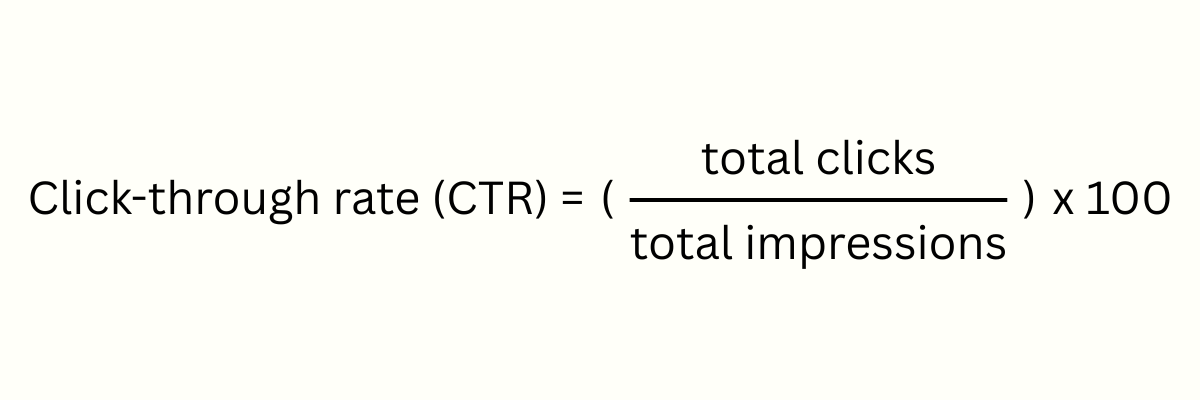
Most main social media platforms — together with Fb, LinkedIn, X/Twitter, Threads, and Bluesky — help clickable hyperlinks in posts. Instagram is just a little totally different: you possibly can’t add hyperlinks to common posts, however you possibly can add them to tales with hyperlink stickers.
In case you use a trackable hyperlink — often known as a UTM — you’ll find out precisely how many individuals landed in your website from a selected publish. Rebecca tracks CTR for posts that ship folks off a social media platform to know what’s catching folks’s consideration and prompting them to click on.
CTR isn’t a conversion metric — it gained’t let you know if somebody truly purchased these earrings or joined your course. Nevertheless it’s a robust signal your content material is drawing folks one step nearer to your corporation goals.
Observe this metric when:
- you need to direct folks a product web page, touchdown web page, or signup kind
- you’re checking whether or not your advert spend is resulting in website visits
- you need to evaluate how totally different CTAs or headlines carry out
💡
Methods to use click-through price
A excessive CTR is an efficient signal that your copy, photographs, or CTA are piquing your target market’s curiosity. If CTR isn’t the place you hoped, that’s your cue to attempt one thing new: tweak your message, refresh your visuals, or experiment with totally different CTAs to see what will get folks clicking.
Manufacturers can use CTR to identify which adverts or posts are compelling sufficient to get folks to click on by means of. If a product drop publish isn’t driving many clicks, contemplate altering up the copy or shifting your focusing on for the following spherical.
Creators can use a robust CTR as a strong speaking level in model pitches — it proves you possibly can ship actual visitors, not simply rack up views. If CTR drops, see it as a nudge to change up your publish construction, check new codecs, or experiment with recent methods to encourage clicks.
2. Price-per-click (CPC)
Price-per-click — or CPC — is an ad-specific metric that tells you the way a lot it prices you for every click on in your advert. It’s a helpful solution to maintain tabs on how your adverts are performing when your aim is to carry folks to a selected web page.
As a result of CPC measures value, that is one social media metric the place a better quantity isn’t at all times a great factor. A decrease CPC, however, means you’re paying much less every time somebody clicks.
CPC is a core paid social metric and is simple to calculate:
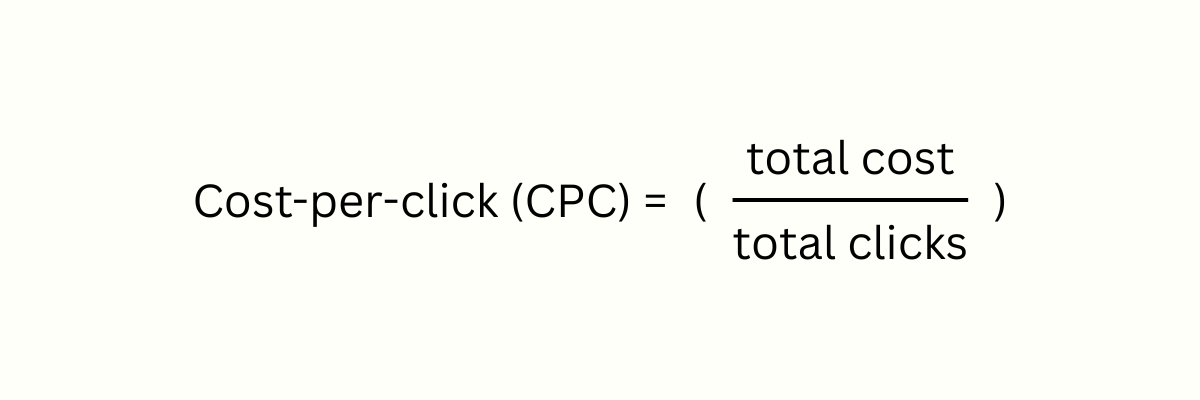
You possibly can calculate CPC for particular person adverts or take a look at it over a whole marketing campaign.
In case you spent $50 on an advert that obtained 100 clicks, your CPC for the advert could be 50 cents — $50/100.
In case you spent $500 {dollars} on a marketing campaign that obtained 2,000 clicks, your CPC for the marketing campaign could be 25 cents — $500/2,000.
Observe this metric when:
- you’re working adverts to drive visitors to a website, retailer, or signup web page
- you need to evaluate CPC throughout social media channels to see the place your price range goes additional
- you’re testing advert variations to see which one drives extra clicks for much less
Methods to use cost-per-click
Begin by wanting on the vary of CPC throughout your adverts. If one model prices extra to get a click on, take a look at the distinction in copy, visuals, or CTA — did one embody a transparent profit? Was it shorter, extra particular, or higher matched to the viewers? Use this data to regulate new adverts within the marketing campaign.
Examine CPC by platform, too. If one constantly offers you decrease prices, contemplate shifting extra of your advert spend there or repurposing what labored within the inventive or copy on different channels.
3. Return on advert spend (ROAS)
Return on advert spend (ROAS) measures how a lot you earn for each greenback spent on adverts. It’s one of many clearest methods to examine whether or not your paid campaigns are turning clicks into revenue.
Whereas CPC measures how a lot your adverts value you, ROAS measures how a lot your adverts earn you.
Right here’s find out how to calculate it:
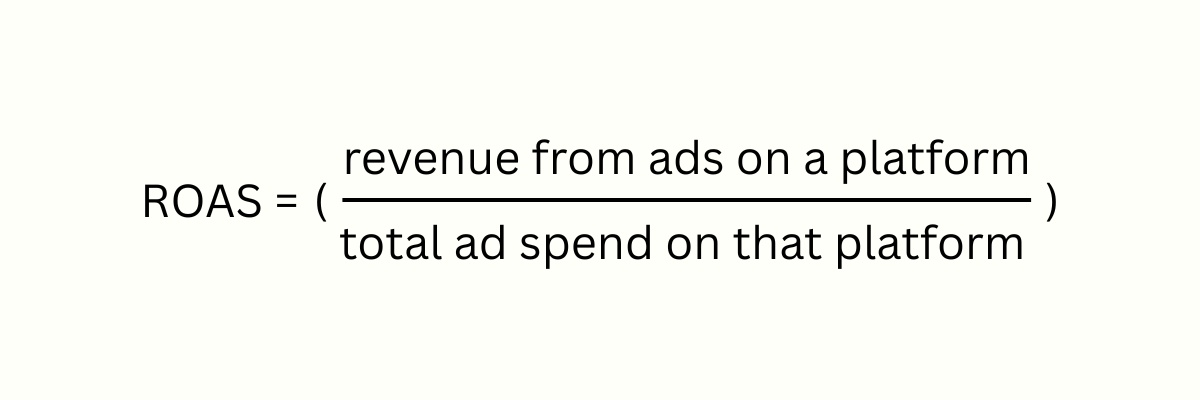
So, should you made $5,000 from a Fb marketing campaign and spent $1,000 on adverts, your ROAS could be 500%.
Digital advertising and marketing marketing consultant Laura Holyer considers ROAS (and income) one of many prime paid social media metrics to trace.
It’s a platform-specific metric, and each the income and the advert spend knowledge come from the identical place — normally the social media platform’s personal monitoring instruments. Which means your numbers will be affected by issues like cookie restrictions or lacking conversion knowledge.
That’s why, says Laura, it’s best to take the numbers “with a pinch of salt” in the event that they’re coming from the platform itself. “Then we take a look at Blended ROAS figures as one of many prime metrics,” she says.
As a substitute of every platform in isolation, Blended ROAS seems on the greater image: how a lot whole income you’re incomes throughout all channels — natural social media, Google searches, e-mail newsletters, paid adverts — in comparison with what you’re spending on promoting.
Right here’s the components for Blended ROAS:
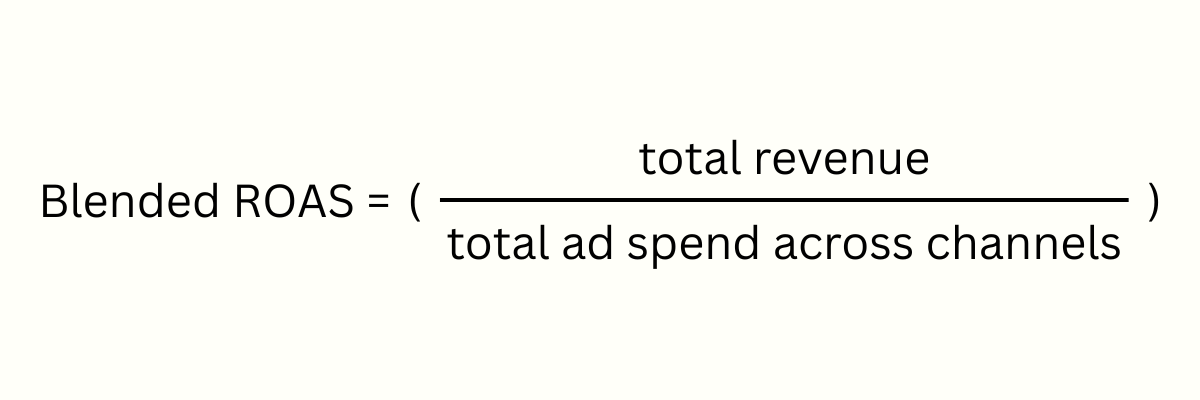
If your corporation brings in $8,000 general after spending $1,000 on adverts throughout all channels, your Blended ROAS is 800%.
Observe this metric when:
- you need to measure whether or not your advert spend is changing into gross sales
- you’re evaluating which channels are bringing in essentially the most return
- you’re attempting to determine the place to shift price range or prioritize spend
Methods to use return on advert spend
Use ROAS to identify which campaigns are bringing in gross sales and which of them would possibly want a change in route — whether or not that’s updating the supply, tweaking the inventive, or rethinking the channel.
Laura factors out that the affect of a marketing campaign additionally exhibits up in methods apart from income. In case you’re working a model consciousness marketing campaign, you may not see gross sales straight away — however you would possibly discover extra folks looking for your model. These sorts of shifts present that your campaigns are working, even when it takes folks just a little longer to behave.
As soon as you recognize which metrics to concentrate to, the following step is determining find out how to observe them. Most platforms supply built-in analytics instruments, however there are additionally third-party choices which will supply a extra full view.
Platform native insights
Most social media platforms include built-in analytics, so you possibly can regulate key metrics with out ever leaving the app.
What you’ll see (and the way a lot element you get) relies on the platform, and typically in your account kind, however almost all of them cowl the fundamentals: impressions, attain, engagement, follower progress, and demographic knowledge.
LinkedIn analytics gives these metrics at each the publish and account stage.
Instagram creator and enterprise accounts go even deeper with their analytics. The info breaks down:
- impressions and engagements from followers vs. non-followers
- share of impressions by content material (and viewers) kind
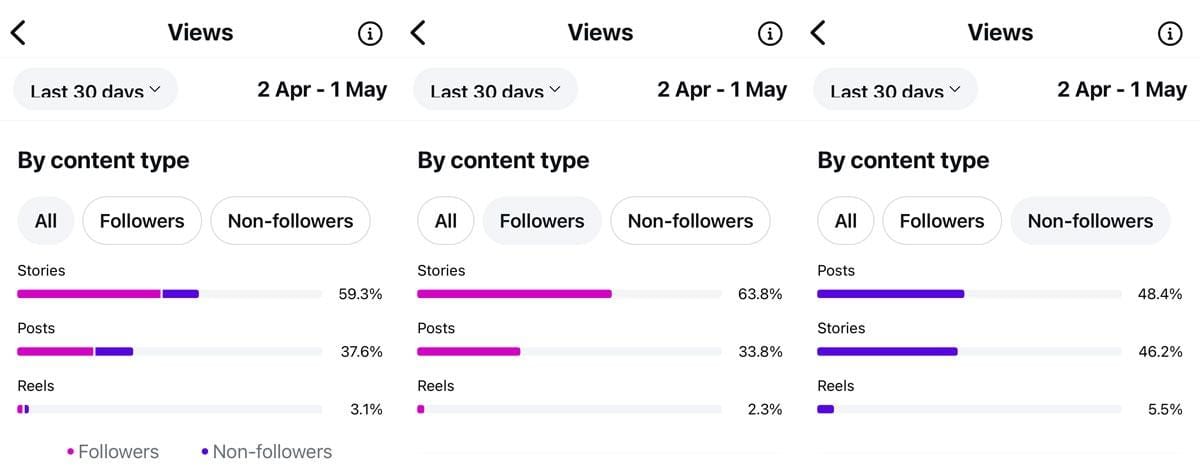
You additionally get knowledge about when your viewers is most energetic every day of the week.
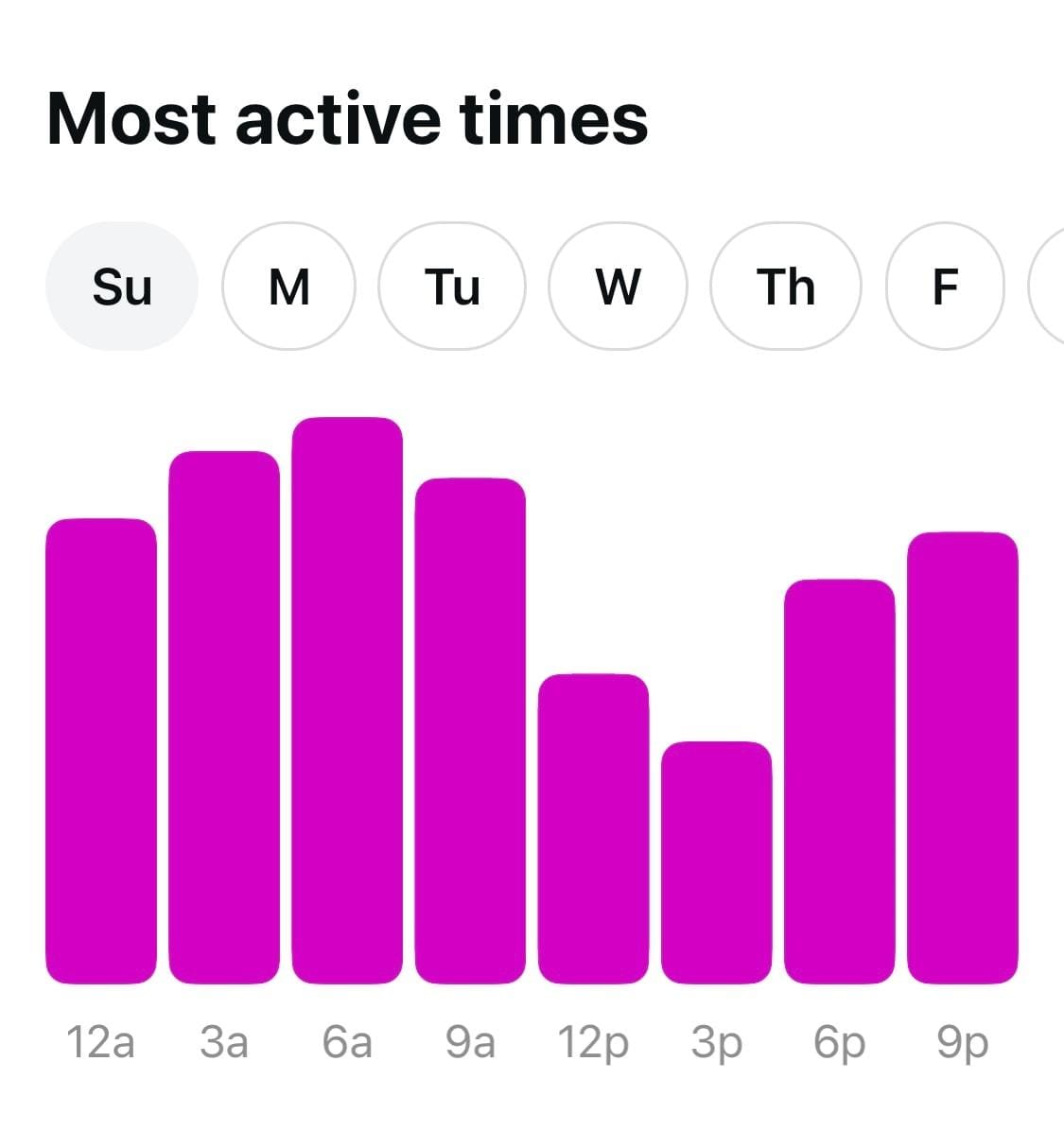
X/Twitter analytics are solely obtainable to premium customers. These detailed metrics embody each tweet- and account-level impressions, engagement, hyperlink clicks, and follower progress. Hyperlink clicks are an essential metric right here, since tweets instantly help clickable hyperlinks. Free customers nonetheless get entry to primary insights on the tweet stage.
Fb, TikTok, and YouTube all have built-in metrics you should utilize to measure your social media efficiency on these channels.
It’s at all times useful to see all these metrics proper the place you create and publish, however there are a number of limitations — network-specific metrics instruments solely present you what’s taking place on that one platform.
In case you’re sharing content material on multiple social channel (and chances are high, you might be), these built-in dashboards aren’t going to provide the entire story. Third-party social media analytics instruments turn out to be useful should you’d wish to zoom out for a birds-eye view and see how all of your channels stack up collectively.
For a extra full view of your social media efforts, you would possibly need to discover third-party analytics instruments.
Social media analytics instruments
Whereas platform-native metrics are useful, social media analytics instruments offer you a extra full image of your efficiency — particularly should you’re working throughout a number of platforms. Right here’s why they could be value contemplating.
In case you handle a number of social media accounts, third-party analytics instruments prevent bouncing backwards and forwards between apps. You possibly can carry all of your numbers collectively in a single dashboard and get a take a look at how your social media efforts stack up throughout each platform you employ.
Some instruments — like Buffer — supply each metrics and customized insights. Suppose:
- which day of the week your posts do greatest
- what varieties of content material get essentially the most engagement
- what number of occasions a day you would possibly need to publish for one of the best outcomes
Monitoring mentions and sentiment is one other huge win. Whereas native instruments are sometimes restricted to primary social media metrics, many third-party platforms show you how to maintain tabs on these model metrics.
And should you’re placing collectively studies in your crew or shoppers, these instruments make that job rather a lot less complicated. Most supply customizable reporting options so you possibly can create studies that match your particular social media KPIs.
Buffer’s analytics instruments show you how to with detailed, customized metrics and insights that show you how to obtain and measure social media success — you’ll even get suggestions on when, what, and the way a lot to publish based mostly on your knowledge.
Enroll at present to check it out at no cost. 🥳
